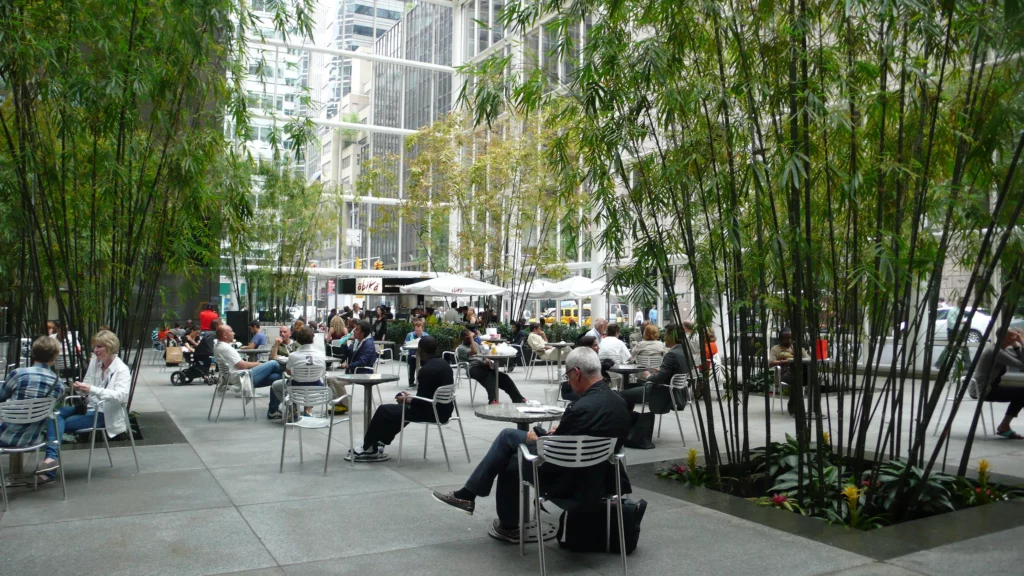
Public community spaces play a crucial role in the sustainability and diversity of cities. On the one hand, they serve as gathering places where people can come together to socialize, engage in cultural activities, and participate in community events. On the other hand, these spaces also serve as important infrastructure for a city’s sustainability, providing opportunities for people to engage in healthy and sustainable behaviors, such as cycling and walking. Additionally, public community spaces can help to promote diversity and inclusivity by creating safe and welcoming environments for people from all backgrounds to come together and interact.
One of the key aspects of designing public community spaces for sustainability is to ensure that they are accessible and inclusive for all users. This can be achieved through a variety of design strategies, including the provision of accessible walking and cycling routes, the inclusion of public transportation options, and the use of sustainable materials and technologies in the construction and maintenance of the spaces. For example, the use of green roofs and rain gardens can help to reduce the amount of runoff from the site, while the use of renewable energy sources can help to reduce the carbon footprint of the space.
Another important aspect of designing public community spaces for sustainability is to ensure that they are designed to be flexible and adaptable to changing needs and uses over time. For example, a community park may be designed with multiple areas that can be used for different activities, such as an open green space for recreational activities, a community garden, and a performance stage. This flexibility helps to ensure that the space can be used and enjoyed by a variety of different groups and individuals, promoting social cohesion and community engagement.
However, while public community spaces can play an important role in promoting sustainability and diversity, they can also present challenges. For example, many public community spaces are underfunded and underutilized, which can lead to a lack of maintenance and neglect of the spaces. Additionally, some public community spaces may be designed in a way that is not inclusive or accessible to all users, such as those who are elderly or have disabilities or homeless people. For example many public park benches/seating areas have been redesigned so that there is no room for a person lying on them to prevent homeless people from spending the night there.
In conclusion, public community spaces play a crucial role in the sustainability and diversity of cities, but it is important that they are designed and maintained in a way that promotes accessibility, inclusivity, and sustainability. By prioritizing these values, cities can create spaces that are both functional and enjoyable, while also promoting social cohesion and community engagement.

Sources:
https://medium.com/interviews-and-articles-on-art-public-spaces/the-importance-of-public-spaces-5bb49ba6c000
https://www.pps.org/article/public-space-benefits
https://www.sciencedirect.com/science/article/pii/S0272494412000461 Creating sense of community: The role of public space
Socio Design: Relevante Projekte: Entworfen für die Gesellschaft.
Bürstmayr, Siegrid. Stocker, Karl. Designing Sustainable Cities: Manageble Approaches to make Urban Spaces better.